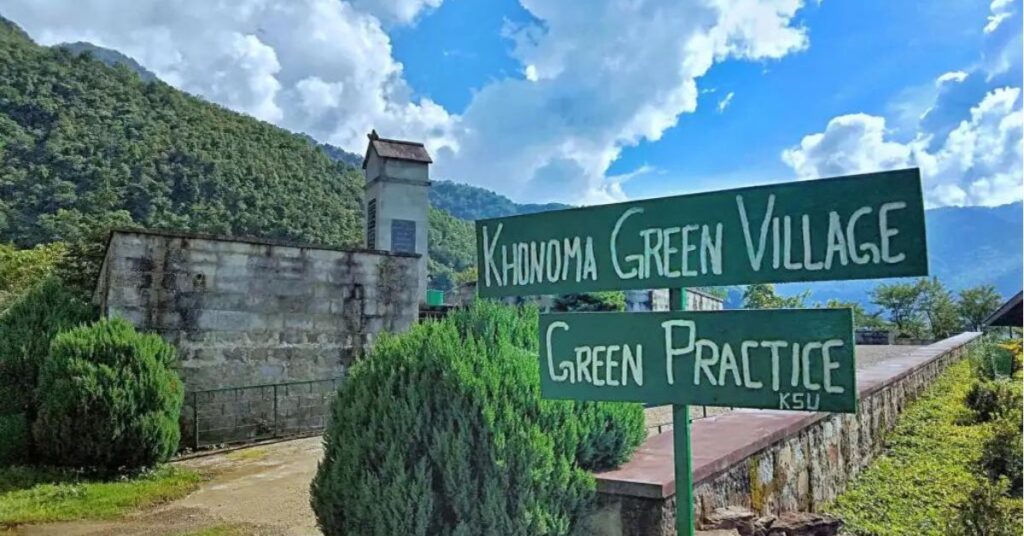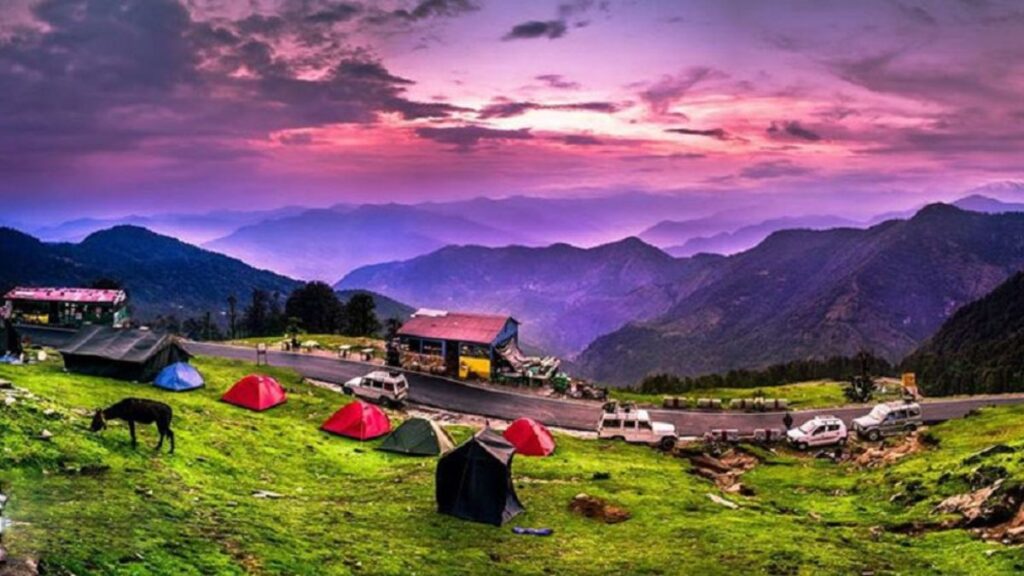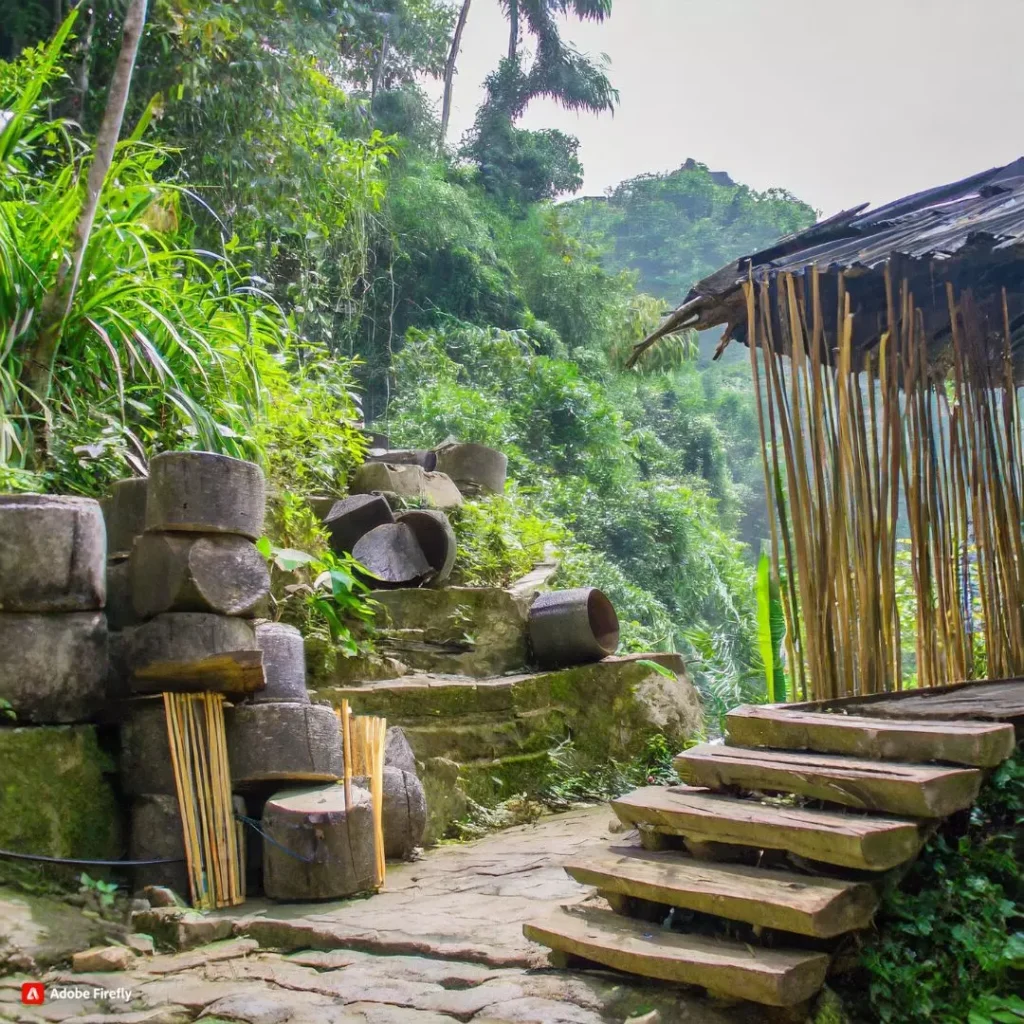India is a land of timeless traditions and vibrant cultures, and the best way to experience its true essence is by exploring its Hidden Villages and Cultural Trails in India. Away from crowded tourist spots, these lesser-known destinations offer a glimpse into India’s rich heritage, local crafts, folk music, and traditional lifestyles.
From the remote hill villages of Himachal Pradesh and Uttarakhand to the serene backwaters of Kerala and tribal settlements in Odisha, each trail tells a story of resilience, artistry, and community. Traveling through these villages not only lets you witness authentic cultural practices but also supports local artisans and sustainable tourism.
Whether you’re an adventure seeker, a cultural enthusiast, or a photographer chasing unique experiences, India’s hidden villages and cultural trails promise an unforgettable journey. In 2025, step off the beaten path and immerse yourself in the authentic, colorful, and soulful side of India — where every village and trail reveals a story waiting to be discovered.
Why Explore Hidden Villages?
- Authentic Cultural Immersion: Unlike commercial tourist hubs, these villages offer genuine interactions with local communities, traditional crafts, and indigenous cuisines.
- Sustainable Travel: Many hidden villages promote eco-tourism, organic farming, and conservation.
- Peaceful Escapes: Free from crowds and noise, these destinations offer tranquility and introspection.
- Living Heritage: From tribal customs to ancient art forms, these villages are living museums of India’s diverse heritage.
Top Hidden Villages in India Worth Visiting
Here’s a curated list of hidden gems across India, each offering a unique cultural trail:
1. Hallan, Himachal Pradesh

Nestled in the picturesque Kullu Valley, Hallan is a tranquil hamlet surrounded by apple orchards, pine forests, and rolling hills. The village is renowned for its traditional Kath-Kuni architecture, where wooden beams and stone walls blend seamlessly with the natural landscape, reflecting centuries-old Himachali craftsmanship. Visitors can enjoy peaceful nature walks, immersive cultural exchanges with locals, and seasonal apple-picking experiences, making Hallan a perfect offbeat destination for travelers seeking both serenity and authenticity. Its warm hospitality, scenic vistas, and untouched charm make it a must-visit hidden gem in Himachal Pradesh, ideal for photographers, nature enthusiasts, and cultural explorers alike.
2. Raghurajpur, Odisha

A heritage crafts village near Puri, Raghurajpur is celebrated for its Pattachitra paintings, traditional masks, and the vibrant Gotipua dance. Every home in this unique village doubles as a studio, allowing visitors to witness centuries-old artistic traditions being actively preserved and passed down through generations. Walking through Raghurajpur’s colorful lanes, travelers can interact with skilled artisans, learn about intricate techniques, and even try their hand at painting or craft-making. Surrounded by rich cultural heritage and the serene backdrop of Odisha’s countryside, Raghurajpur offers a perfect offbeat destination for art enthusiasts, photographers, and anyone seeking an authentic glimpse into India’s living cultural legacy.
3. Khonoma, Nagaland

Khonoma, India’s first green village, is a unique blend of tribal heritage and environmental conservation. Home to the Angami tribe, the village is renowned for its sustainable farming practices, forest preservation efforts, and eco-conscious lifestyle, making it a model for responsible tourism in India. Visitors can explore charming stone pathways, traditional Naga architecture, and vibrant local markets while witnessing a community deeply connected to nature. Surrounded by lush hills and dense forests, Khonoma offers a peaceful retreat for travelers seeking offbeat cultural experiences, wildlife spotting, and eco-tourism adventures in Nagaland.
4. Chopta, Uttarakhand

Often called the “Mini Switzerland of India,” Chopta in Uttarakhand is a serene hill station known for its alpine meadows, pristine forests, and panoramic Himalayan views. It serves as the base for treks to Tungnath, the highest Shiva temple in the world, and further on to Chandrashila Peak, offering breathtaking sunrise vistas. Apart from its spiritual significance, Chopta is a haven for nature lovers, photographers, and adventure seekers, with trails that weave through rhododendron forests, snow-capped peaks, and meandering streams. Its tranquil environment, rich biodiversity, and small village charm make it a must-visit offbeat destination for travelers exploring hidden cultural and natural gems in India.
5. Mawlynnong, Meghalaya

Dubbed the cleanest village in Asia, Mawlynnong in Meghalaya is a shining example of sustainable living and community-driven cleanliness. This picturesque village showcases authentic Khasi tribal culture, traditional bamboo architecture, and the world-famous living root bridges, which have fascinated travelers and photographers alike. Strolling through Mawlynnong, visitors can witness the villagers’ harmonious lifestyle, vibrant local crafts, and eco-friendly practices that make it a model for responsible tourism. Surrounded by lush greenery, flowing streams, and scenic viewpoints, Mawlynnong offers a perfect offbeat getaway for those seeking culture, nature, and a glimpse into India’s tribal heritage.
6. Kasar Devi, Uttarakhand

A serene spiritual retreat near Almora, Kasar Devi has long attracted philosophers, artists, and seekers, including luminaries like Swami Vivekananda and musician Bob Dylan. Perched on a hilltop overlooking the Kumaon Himalayas, the area is believed to have a unique magnetic field, adding to its mystical charm. With its lush surroundings, quiet pathways, and breathtaking sunset views, Kasar Devi is perfect for meditation, yoga, and self-reflection. Beyond its spiritual significance, the village offers a glimpse into traditional Kumaoni culture, charming local temples, and tranquil natural landscapes, making it a must-visit destination for travelers exploring offbeat and culturally rich locations in Uttarakhand.
7. Banavasi, Karnataka

One of the oldest towns in Karnataka, Banavasi is steeped in history and renowned for its ancient temples, classical poetry, and peaceful riverside landscapes. Often called the cradle of Karnataka’s culture, this charming town offers travelers a glimpse into its rich heritage, traditional rituals, and vibrant local festivals. Surrounded by lush greenery and the flowing Varada River, Banavasi is not just a historical destination but also a serene retreat for nature lovers and cultural enthusiasts alike. Its centuries-old architecture, intricately carved temples, and quiet village lanes make it a must-visit spot for anyone exploring hidden cultural gems of Karnataka.
Comparison Table: Hidden Villages & Their Cultural Highlights
| Village | State | Cultural Highlights | Best Time to Visit | Unique Experience |
|---|---|---|---|---|
| Hallan | Himachal Pradesh | Kath-Kuni architecture, apple orchards | March–June | Homestays with local families |
| Raghurajpur | Odisha | Pattachitra art, Gotipua dance | October–March | Art workshops with master painters |
| Khonoma | Nagaland | Tribal customs, eco-tourism | November–April | Forest walks with Angami guides |
| Chopta | Uttarakhand | Alpine meadows, Tungnath temple | April–June | Trekking and birdwatching |
| Mawlynnong | Meghalaya | Living root bridges, Khasi culture | October–April | Bamboo tree houses |
| Kasar Devi | Uttarakhand | Spiritual retreats, magnetic field | September–May | Meditation and nature walks |
| Banavasi | Karnataka | Ancient temples, riverside poetry | November–February | Cultural storytelling sessions |
Cultural Trails That Preserve India’s Soul
Beyond individual villages, India offers thematic cultural trails that connect multiple destinations through shared heritage.
1. Crafts & Artisans Trail
- Route: Raghurajpur (Odisha) → Kutch (Gujarat) → Andretta (Himachal Pradesh)
- Highlights: Pattachitra, embroidery, pottery
- Experience: Hands-on workshops, artisan interactions, heritage walks
2. Spiritual & Temple Trail – Hidden Villages and Cultural Trails in India
- Route: Banavasi (Karnataka) → Chopta (Uttarakhand) → Kasar Devi (Uttarakhand)
- Highlights: Ancient temples, spiritual retreats
- Experience: Meditation, temple architecture tours, local rituals
3. Eco-Conscious Tribal Trail
- Route: Khonoma (Nagaland) → Mawlynnong (Meghalaya) → Bastar (Chhattisgarh)
- Highlights: Tribal customs, sustainable living
- Experience: Forest treks, tribal cuisine, conservation stories
Travel Tips for Exploring Hidden Villages
Learn Basic Phrases: A few words in the local language can go a long way in building rapport.
Respect Local Customs: Dress modestly, ask before taking photos, and engage respectfully.
Support Local Economy: Buy handmade crafts, eat local food, and stay in homestays.
Pack Light & Smart: Essentials include sturdy shoes, eco-friendly toiletries, and offline maps.
Final Thoughts: Rediscovering India Through Its Hidden Villages
India’s hidden villages and cultural trails are more than just offbeat travel destinations—they are gateways to timeless traditions, sustainable living, and authentic human connection. As travelers increasingly seek meaningful experiences, these lesser-known gems offer a rare chance to witness India’s soul in its purest form.
From the eco-conscious practices of Khonoma to the artistic legacy of Raghurajpur, each village tells a story that deserves to be heard, felt, and preserved. Whether you’re a cultural explorer, a nature lover, or a seeker of serenity, these trails promise immersive journeys that go far beyond sightseeing.
By choosing to explore these hidden villages, you not only enrich your own travel experience but also contribute to the preservation of India’s diverse heritage. So pack your curiosity, tread lightly, and let the cultural trails of India guide you to places where history lives, nature heals, and communities welcome you with open arms.
FAQs
1. What are hidden villages in India?
- Hidden villages are remote, lesser-known settlements that preserve traditional lifestyles, crafts, and cultural heritage, offering travelers an authentic and immersive experience away from mainstream tourism.
2. Why should I explore hidden villages in India?
- These villages provide a unique blend of cultural richness, natural beauty, and sustainable living practices, making them ideal for travelers seeking meaningful and offbeat experiences.
3. Which village is known as the cleanest in India?
- Mawlynnong in Meghalaya holds the title of Asia’s cleanest village, celebrated for its eco-friendly practices, community-led cleanliness, and stunning natural surroundings.
4. What is a cultural trail in India?
- A cultural trail is a curated travel route that connects destinations based on shared heritage themes—such as crafts, spirituality, or tribal traditions—allowing travelers to explore India’s diverse cultural landscape.
5. Are hidden villages safe for solo travelers?
- Yes, most hidden villages are safe and welcoming. Staying in verified homestays and engaging with local guides enhances safety and enriches the experience.
6. When is the best time to visit hidden villages in India?
- The ideal travel window is between October and April, when the weather is pleasant and many cultural festivals take place.
7. How do I reach these remote villages?
- Access typically involves road travel from nearby towns or cities. Hiring local transport or joining guided tours is recommended for convenience and insight.
8. What kind of accommodation is available in hidden villages?
- Expect homestays, eco-lodges, and guesthouses that offer basic amenities and a chance to live with local families, often including home-cooked meals and cultural interactions.
9. Can tourists participate in village activities?
- Absolutely. Visitors can engage in farming, cooking, craft-making, and traditional ceremonies depending on the village and season.
10. Are hidden villages suitable for family vacations?
- Yes. These destinations offer safe, educational, and enriching experiences for travelers of all ages, especially children interested in nature and culture.
11. What are some must-visit hidden villages in India?
- Top picks include Khonoma (Nagaland), Raghurajpur (Odisha), Hallan (Himachal Pradesh), Banavasi (Karnataka), and Mawlynnong (Meghalaya).
12. What makes Khonoma village unique?
- Khonoma is India’s first green village, known for its tribal conservation efforts, sustainable agriculture, and rich Angami heritage.
13. What traditional art is practiced in Raghurajpur?
- Raghurajpur is renowned for Pattachitra painting, palm leaf engraving, and Gotipua dance—all practiced and preserved by local artisans.
14. Is eco-tourism common in hidden villages?
- Yes. Many villages promote eco-tourism through organic farming, forest conservation, and low-impact travel experiences that benefit both visitors and locals.
15. What essentials should I pack for village travel?
- Bring sturdy footwear, eco-friendly toiletries, local currency, offline maps, and modest clothing suitable for rural environments.
16. Will I have mobile and internet access in these villages?
- Connectivity varies. While some villages have basic mobile networks, internet access may be limited. It’s best to prepare for partial digital detox.
17. How do cultural trails support local communities?
- Cultural trails generate income, preserve heritage, and promote sustainable tourism by involving locals in guiding, hosting, and showcasing their traditions.
18. Are guided tours available for cultural trails?
- Yes. Several travel companies and NGOs offer curated cultural trail packages with local guides, workshops, and immersive experiences.
19. What languages are spoken in these villages?
- Regional languages dominate, but basic Hindi and English are often understood. Learning a few local phrases can enhance communication and connection.
20. How can I travel responsibly in hidden villages?
- Support local businesses, respect customs, minimize waste, and share your experience to promote ethical and sustainable tourism.






